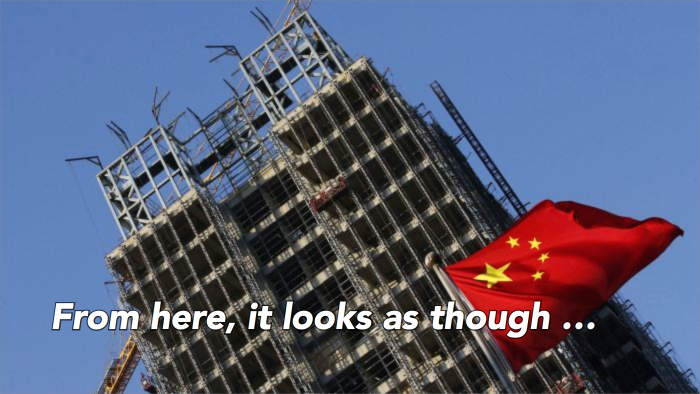May 21 2014
Alarm bells are warning of a Chinese property bubble, but Beijing can avoid a crisis by allowing inflation to fix the problem.
by Scott Minerd, CIO, Guggenheim Partners LLC
In the first four months of this year, housing starts in China fell by 25 percent from a year ago, the amount of homes sold fell by 8.6 percent, and home price appreciation has clearly slowed, adding to concerns of property sector weakness. While Chinese policymakers are curbing the growth of shadow banking, some highly leveraged developers have been unable to repay loans or start new projects because the availability of credit has tightened. Some fear this could lead to a crisis akin to the U.S. financial collapse of 2008. Real estate investment accounts for about 12.5 percent of China’s economic activity, making it vitally important to investors and Beijing. Still, a slowing property market can be managed.
Alarm bells warning of China’s coming real estate meltdown sound very similar to worries about Europe’s commercial real estate debts a few years ago. In 2010, there were huge concerns over the billions of euros of commercial real estate loans on the books of European banks. With many of those loans needing to be refinanced by 2012, some feared a terrible reckoning resulting from high loan-to-value ratios, loans being under water, and broken loan covenants. While there were some localized disturbances, these were largely contained and a full-blown European real estate crisis never materialized. Anyone who understood the European system could see that this was never likely to bring the banking system down and the same goes for China today.
Chinese real estate is problematic, but not catastrophic. Chinese loan-to-value ratios on residential real estate loans are in the 50-60 percent range -- much lower than typical leverage ratios in the United States, which are currently 78.3 percent. Prices are certainly high, but Chinese policymakers have been guiding housing price appreciation to zero over the past few years, and therefore, I do not see housing falling off a cliff.
A potential fix would be for Beijing to let inflation rise to 5-7 percent for three or four years and grow out of the problem. A Chinese slow-growth scenario where nominal GDP doubled over five years or so would eliminate the housing problem with little pain. Investors wondering if 5-7 percent inflation is acceptable should remember we have been there twice in the past decade and with China’s housing market an important pillar of its economy, we may be headed there again.
Chart of the Week
Chinese Banking Crisis Unlikely
Concerns of a Chinese housing market collapse have mounted recently, with home price appreciation moderating and new construction plunging. Any housing slowdown would weigh on consumer wealth gains and damage household balance sheets but would be unlikely to cause a full-blown banking crisis. Real estate lending is a much smaller portion of banking activity in China than in the United States, suggesting any negative impact from a housing slowdown would be manageable.
EXPOSURE TO CHINESE HOUSING MARKET DOWNTURN

Source: Haver, CEIC, BIS, Guggenheim Investments. Data as of 4Q2013 for household debt and as of 1Q2014 for real estate loans.
Economic Data Releases
U.S. Housing Starts Show First Signs of Housing Rebound
- U.S. housing starts improved more than expected in April, rising 13.2 percent to an annualized pace of 1.072 million. Most of the gains came from multi-family units.
- Building permits were strong in April, up 8.0 percent to 1.08 million, a cyclical high.
- Mortgage applications rose for a third straight week in the week ended May 16, the first such streak since January.
- University of Michigan consumer confidence fell in May to 81.8, due in part to rising consumer prices.
Euro Zone Consumer Confidence Makes New High, Japanese Exports Rebound
- Euro zone consumer confidence rose to -7.1 in May, the highest since October 2007.
- U.K. retail sales were stronger than expected in April, rising for the third straight month at 1.3 percent growth from March. Sales ex autos were up 1.8 percent.
- The CPI in the United Kingdom increased on a year-over-year basis for the first time since June 2013 in April.
- Japanese exports rebounded to 5.1 percent year-over-year growth from 1.8 percent, following six months of downward trending export growth.
Copyright © Guggenheim Partners LLC














